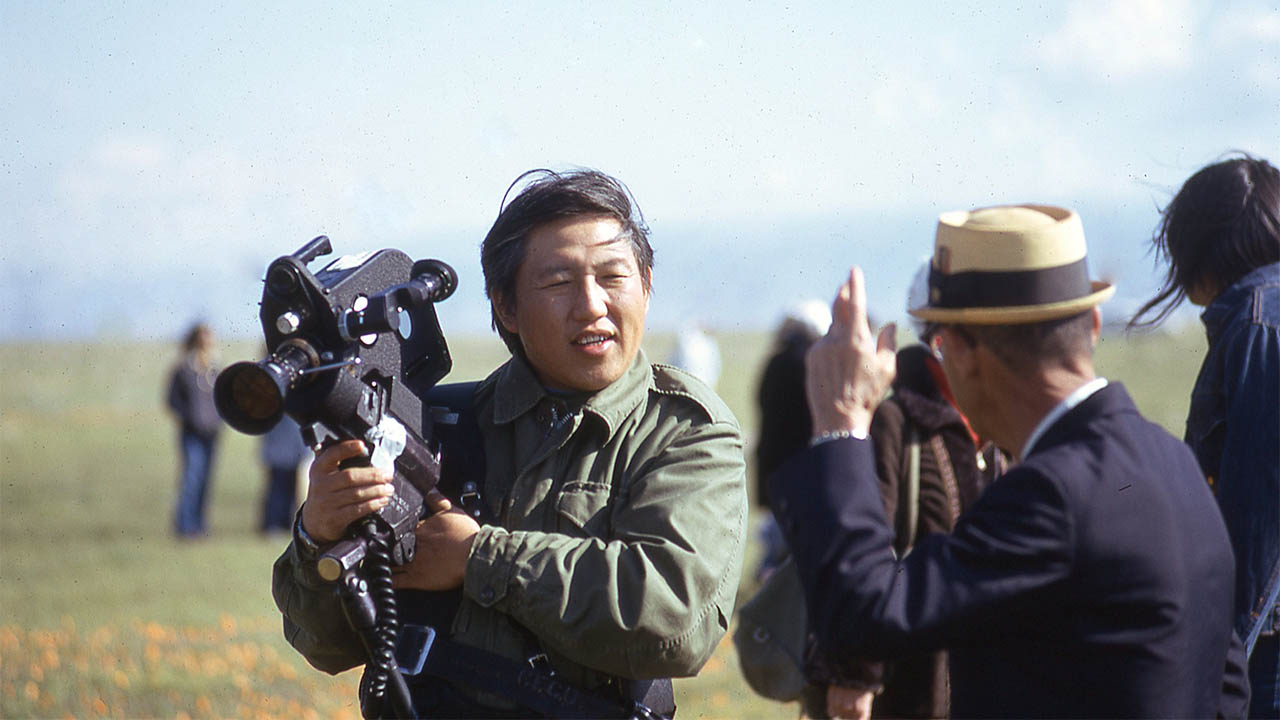Visual Communications Receives National Film Preservation Foundation Funding
/NFPF Support Earmarked for Restoration of VC “Classics” HITO HATA: RAISE THE BANNER and WATARIDORI: BIRDS OF PASSAGE
Los Angeles – Visual Communications, the nation’s premier Asian Pacific American media arts organization, announced today that it has received one of 35 preservation grants from the San Francisco-based National Film Preservation Foundation (NFPF).
The prestigious federal preservation matching grant from NFPF will enable VC to preserve and restore two of the organization’s signature film productions created by co-founder Robert A. Nakamura — WATARIDORI: BIRDS OF PASSAGE (1976) and HITO HATA: RAISE THE BANNER (1980, co-directed by Duane Kubo). The films, considered as “classics” in many APA independent cinema circles, have come to exemplify a uniquely Visual Communications “style” that has built upon the development of a uniquely APA “aesthetic” forged almost from VC’s inception in 1970. The two films have also given a much-welcome voice to the experiences of the issei (first-generation Japanese Americans) in a new country.
“It’s amazing to note that over four decades since their production in the mid-1970s, HITO HATA and WATARIDORI continue to be regarded as creative templates for our ever-growing APA cinema movement,” said Visual Communications Executive Director Francis Cullado. “I think it’s safe to say that without the inspiration of VC co-founder Robert Nakamura to produce these works, ‘Asian Pacific American cinema’ as we know it would be in a very different place today. We thank the National Film Preservation Foundation for believing in the impact and legacy of our co-founder Bob Nakamura’s pioneering works. We look forward to sharing the results of this vital preservation and restoration effort in 2020 as part of Visual Communications’ slate of 50th Anniversary celebration events.”
WATARIDORI: BIRDS OF PASSAGE and HITO HATA: RAISE THE BANNER channeled Nakamura’s need to tell the stories of Japanese Americans from his personal perspective. A former internee as a five-year-old at the Manzanar concentration camp for Japanese Americans during World War II, Nakamura later served in the U.S. Army. Upon his discharge, he earned a degree at Art Center College of Design and embarked on a career in photojournalism and advertising photography. A stint working on the staff of famed modernist designers Charles and Rae Eames influenced his convictions that true creativity needn’t come with monetary extravagance; a work ethic that he carried with him to UCLA as a graduate film major in 1969.
WATARIDORI: BIRDS OF PASSAGE (1976), Nakamura’s UCLA Master’s thesis film, celebrated the issei, or pioneering Japanese who immigrated to and settled in America beginning in the mid-1880s. Considered an important milestone production in APA cinema, WATARIDORI offered a nuanced, accessible, and timeless account of the issei spirit and their legacy. Informed by distinct visual lyricism, scholarship, and deliberate, patient storytelling, WATARIDORI exemplified VC’s model of community-based and inspired cinema, and has come to be regarded as a necessary primer in learning about the Japanese American experience.
HITO HATA: RAISE THE BANNER (1980) was largely influenced by the 1970s-era struggle around community redevelopment and the ensuing displacement of longtime residents and mom-and-pop businesses in and immediately surrounding Los Angeles’ Little Tokyo neighborhood. For this project, Nakamura shared directing duties with fellow VC co-founder Duane Kubo, while Nakamura and then-UCLA graduate film student John Esaki hammered the screenplay into shape. Starring a group of Asian American acting talents led by Oscar®-nominated actors Mako and Noriyuki “Pat” Morita, as well as Tad Horino, Hiroshi Kashiwagi, Saachiko, and Yuki Shimoda, HITO HATA premiered to a sold-out house at the 2,000-seat Dorothy Chandler Pavilion before embarking on a year-long tour of cities with significant Japanese American and Asian American populations.
“Given the amazing achievements and ongoing developments of the APA cinema movement, it’s still vital for us to step back and appreciate the considerable legacy of our pioneering filmmakers,” said Abraham Ferrer, VC’s Archives and Distribution Manager. “HITO HATA and WATARIDORI are both ‘of their time’ and ‘timeless’ all at once. Most important, Bob Nakamura provided a means of portraying our lives and experiences in ways that newer generations of APA creatives can celebrate and emulate.”
HITO HATA and WATARIDORI are the fourth and fifth film productions in VC’s “Classics” (celluloid film-based) catalog that has received preservation support from NFPF. Previous NFPF-supported titles include Duane Kubo’s CRUISIN’ J-TOWN in 2002 and CITY CITY in 2007; and Alan Kondo’s …I TOLD YOU SO in 2007. For a full list of NFPF 2019 federal grant winners, click here.
—-
VISUAL COMMUNICATIONS is the first non-profit organization in the nation dedicated to the honest and accurate portrayals of the Asian Pacific American peoples, communities, and heritage through the media arts. VC’s mission is to develop and support the voices of Asian American and Pacific Islanders filmmakers and media artists who empower communities and challenge perspectives. Visual Communications is funded in part by the Aratani Foundation, Asian Pacific Community Fund, California Arts Council, CalHumanities, Department of Cultural Affairs, City of Angeles, Los Angeles County Arts Commission, National Endowment for the Arts, and VC Stakeholders and community partners.
The NATIONAL FILM PRESERVATION FOUNDATION is a nonprofit organization created by the U.S. Congress to help save America’s film heritage. The NFPF is the charitable affiliate of the National Film Preservation Board of the Library of Congress. Since its creation in 1996, NFPF has provided preservation support to over 300 institutions and saved 2,478 films through grants and collaborative projects. The grants are made possible by funds authorized through The Library of Congress Sound Recording and Film Preservation Programs Reauthorization Act of 2016, secured through the leadership of the Library of Congress, and the contributions of public-spirited donors. Click here to learn more.



